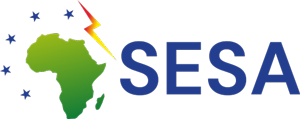D6.1 Dissemination, exploitation and replication strategy and updates
D6.1 Dissemination, exploitation and replication strategy and updates
A sound and coherent strategy will be delivered to ensure an effective outreach, exploitation, dissemination and communication of the project and its wide impact. The document will include information about the visual identity of the project considering also the country specificities, identifies relevant channels and set an appropriate timeline that will also secure the engagement of all project partners and their networks. The document will be further updated to include the inputs received and adjust the strategy as needed to guarantee its success.
Executive summary
This document sets out the communication, dissemination and exploitation strategy for SESA. The strategy identifies opportunities for public outreach and engagement throughout the project and plans appropriate activities related to the different work packages of the project. This is a dynamic document that will be updated on a regular basis to respond to new developments and opportunities during the implementation process of the project.
This document is structured as follows:
- Chapter 2 presents the communication and marketing methodology adopted by the project to ensure it attracts, engages with and retains SESA audiences (national and local governments, industry, SMEs and startups, energy providers and energy authorities, financing institutions, research and innovation community and civil society). It provides the tools to support all partners in promoting the SESA project, engaging stakeholders and disseminating the results.
- Chapter 3 offers an overview of target audiences, tools, channels, and activities. SESA channel mix is introduced, consisting of a dynamic newsroom section and social media content, influencer/ PR outreach, as well as in-person marketing.
- Chapter 4 presents the communication channels, tools and activities.
- Chapter 5 outlines the communication plan, the project partners’ responsibilities, and overall delivery timeline.
- Chapter 6 addresses SESA exploitation strategy






Recent Comments